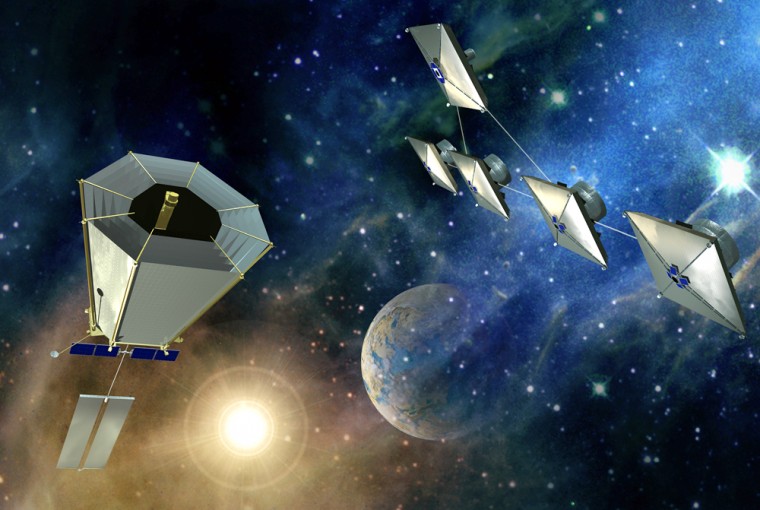NASA has delayed two programs that search for planets capable of supporting life as the space agency instead focuses on developing a new manned spacecraft to return to the moon in the next decade.
The delayed SIM PlanetQuest and Terrestrial Planet Finder missions, managed by NASA’s Jet Propulsion Laboratory, aim to determine whether there are Earthlike planets beyond our solar system with conditions suitable for life or developing in that direction.
President Bush’s budget proposal, released Monday, seeks to give NASA $16.8 billion for fiscal year 2007, a 3 percent increase from the year before. Of that, about $5.3 billion in funding will go toward the space agency’s science missions.
NASA is trying to fulfill Bush’s space exploration vision to build the new Crew Exploration Vehicle that would replace the aging space shuttle fleet and enable a return to the moon by 2018. NASA Administrator Michael Griffin told a news conference that the budget reflects that priority.
Missions postponed
Under the proposed budget, the SIM PlanetQuest project would receive $98.5 million in fiscal year 2007, but its original launch date of 2011 was pushed back to no earlier than 2015.
The goal of SIM is to measure the distances and positions of stars to locate Earthlike planets out to 100 light-years away using a technique called interferometry where light from multiple telescopes is combined to create images.
The dual Terrestrial Planet Finder telescopes, originally scheduled to lift off in 2016 and 2019, would have used the information by SIM to photograph those planets to look for evidence of life. That program has been indefinitely postponed, however, and some observers said the Terrestrial Planet Finder was essentially dead.
Geoffrey Marcy, an astronomer at the University of California at Berkeley and an investigator for SIM, expressed disappointment that “our society can’t put more resources into answering the glorious question of whether we humans are alone in this universe.”
A somewhat less ambitious, $299 million planet-finding mission called Kepler is still due for launch in 2008 as scheduled. Meanwhile, other countries are working on space telescopes that could be used to look for extrasolar planets, including Canada's MOST satellite and France's Corot telescope.
Mars program on track
Other JPL-managed projects, including sending the next generation of spacecraft to roam Mars, remain on track.
The NASA budget allocated $90.5 million toward the launch of Phoenix Mars lander in 2007. The stationary probe will land on Mars’ north pole and use its robotic arm to dig into the icy terrain for signs of water.
Another $348 million went to the Mars Science Laboratory, which will roam the Red Planet collecting soil samples and rock cores for analysis. The Mars Science Laboratory is scheduled to launch in 2009.
The Pasadena-based NASA center, which laid off about 300 workers last year as part of an agencywide cut, said its workforce will remain stable in light of the proposed budget. The center currently has about 5,000 workers.
MSNBC's Alan Boyle contributed to this report.
